As famine grips Gaza, families turn to desperate measures to survive

Cradling 18-month-old Mohamed in her arms, Hedaia remembers a once-healthy child when food was available - despite Mohamed's muscular atrophy, a rare genetic weakness. Today, the little boy is skeletal.
“He needs milk, diapers and specific foods,” Hedaia said, as her son cried softly. “But we can’t afford them.” (For their safety, only the first names of Gazan interviewees are being used in this story.)
Hedaia’s struggle to find food is reflected across Gaza, where 641,000 people will face catastrophic hunger by the end of September, according to figures released today (22 August).
The Integrated Food Security Phase Classification, the global standard for measuring food insecurity, has confirmed famine in Gaza Governorate - a first in the Middle East. The IPC has raised its classification to Phase 5, the highest on its scale, where people face “catastrophic conditions characterised by starvation, destitution and death.”
An additional 1.14 million people in the territory will be in Emergency (IPC Phase 4) and a further 396,000 people in Crisis (IPC Phase 3) conditions.
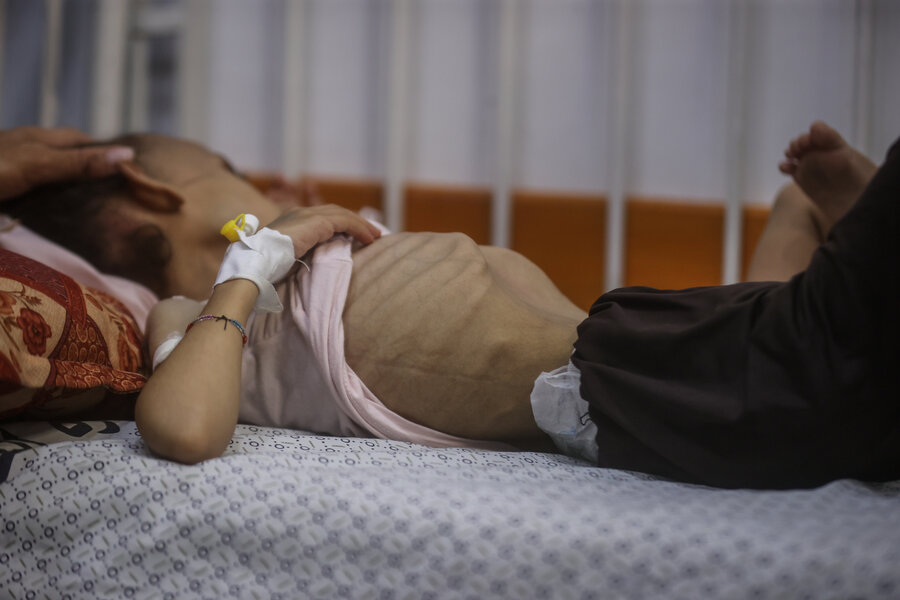
The IPC also projected famine would spread southward, reaching the Deir al-Balah and Khan Younis Governorates by the end of September. Access restrictions mean there is limited data available for North Gaza Governorate, where “conditions are estimated to be as severe - or worse - than in Gaza Governorate.”
“Famine warnings have been clear for months,” said WFP Executive Director Cindy McCain. “What’s urgently needed now is a surge of aid, safer conditions, and proven distribution systems to reach those most in need - wherever they are. Full humanitarian access and a ceasefire now are critical to save lives.”
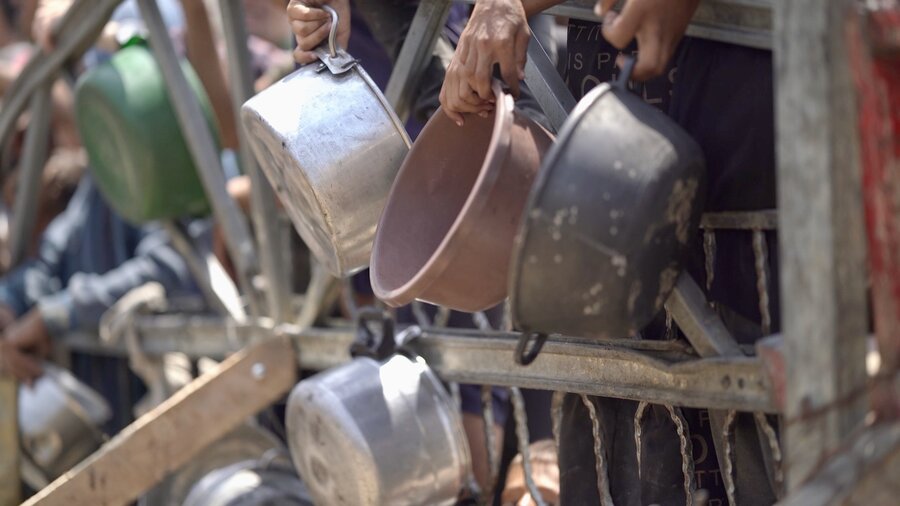
The IPC findings amount to the first time that famine has been confirmed in the Gaza Strip. They follow four previous IPC warnings issued since November 2023, highlighting the risk of famine. And they come just weeks after the expert body concluded two out of three famine thresholds - plummeting food consumption and soaring acute malnutrition - had been breached.
Fuelling the crisis are relentless conflict, a collapse of essential services, markets and local food production, and limitations on World Food Programme (WFP) and other agencies’ aid delivery and distribution. Only three other famines have been declared over the past 15 years, including in Sudan, which is ongoing.
Restarting distribution key
“If you are elderly, if you are a child under 5, if you are a widow - how, in the current conditions, can you access food?” asked WFP Palestine Country Director Antoine Renard. He and others are calling for flooding Gaza with enough assistance to ensure it reaches all the Strip’s 2 million civilians - the only way, they say, to turn around a catastrophic hunger trajectory.
“If there is the political will, the situation can flip from one day to the next,” Renard added. “There are no logistical issues, no lack of capacity, no lack of funding. The goods are there, ready to serve the population.”

Renard recently returned from a week in Gaza, where he spoke with families fighting starvation. “What’s important is to restart the distribution system where we get the food to the right people, and to have bakeries up and running,” he said. “Especially hot meals” - now rare in Gaza, as people lack fuel for cooking.
Since the last IPC analysis in May, the number of children expected to be at severe risk of death from malnutrition by the end of June 2026 has tripled from 14,100 to 43,400. Similarly, for pregnant and breastfeeding women, the number of estimated cases has tripled from 17,000 in May to 55,000 women expected to be suffering from perilous levels of malnutrition by mid-2026. The impact is visible: one in five babies are born prematurely or underweight.
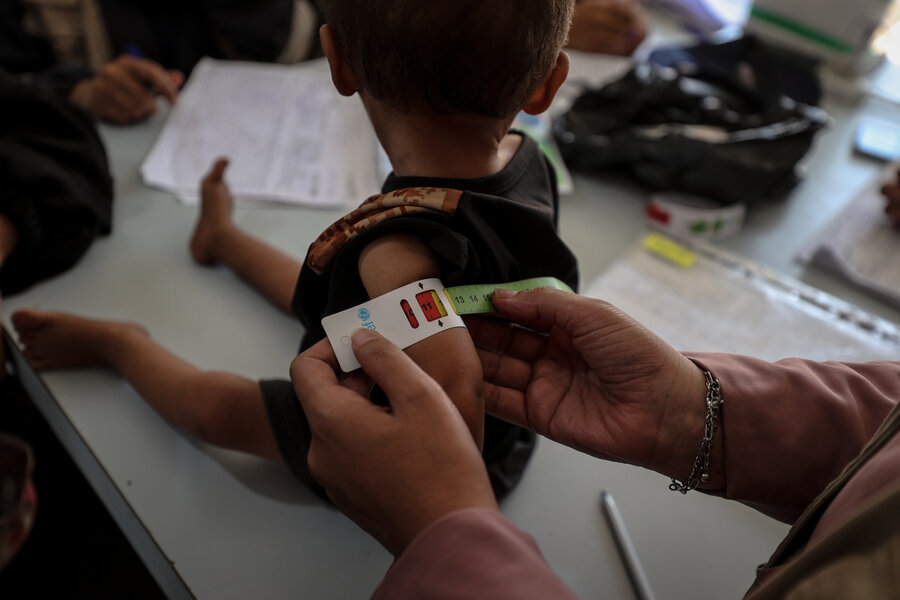
Today, border crossings are reopened after a complete blockade earlier in the year. But operating conditions inside Gaza are extremely challenging.
Aid is entering Gaza, but nothing is reaching WFP warehouses or the distribution points run by WFP’s partners. Overall, the amount of food now getting into the Strip only meets a fraction of the enormous needs – and it is not reaching the most vulnerable people.
Thousands of people flock to border crossings and wait for convoys, hoping to grab what little assistance arrives. For many, the effort ends in failure.
“You have such a level of violence, of despair. People are rushing towards any truck, just to grab anything that looks like food,” Renard said.
‘Craving everything’
Renard describes how one woman, Samia, waited in anguish for news of her 14-year-old son, after he disappeared for days in the hunt for sustenance. “He was coming back with a bit of wheat flour or a few cans,” Renard said of the boy’s trips. “He would tell her, ‘I will not go again, because it’s too violent.’”
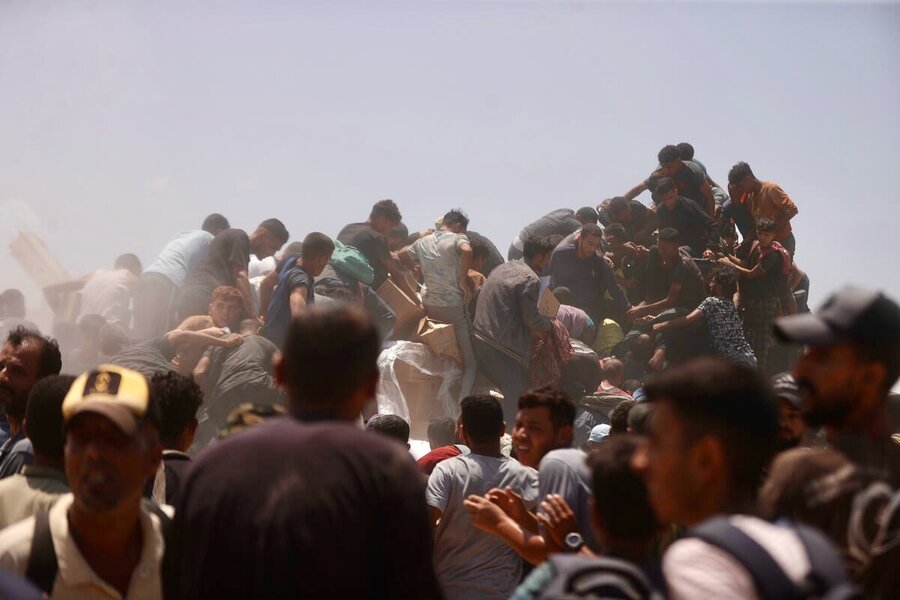
“And what does he do at the end of the week, when food runs out?” Renard asked. “He goes again.”
Sitting with her family in a torn tent in Gaza City opened up to the sky, another mother, Basma, described similar ordeals. “We risked everything, just to find a bit of food,” she said. “And we came back with nothing.”
Her family often goes for days without food, Basma added. Severely malnourished, she cannot breastfeed her son. He sips water instead of formula from a bottle; that is all the family has.
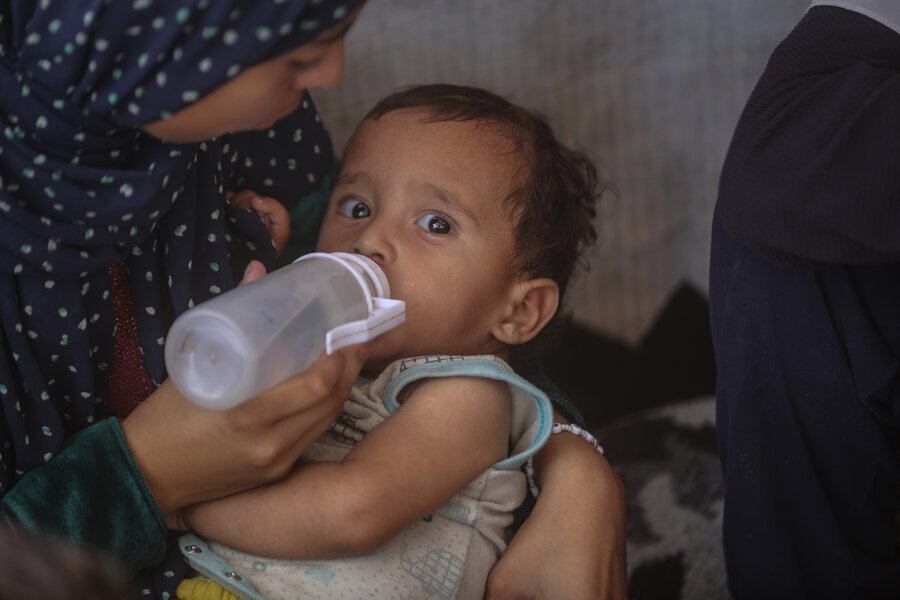
The young mother stretches out her children’s meals by adding water to their small supply of lentils. With fresh water increasingly scarce, her family uses seawater down a sandy path for washing and bathing.
“We’re craving vegetables, fruits - we’re craving everything,” Basma said, adding her children are getting dizzy from a lack of food.
“If this continues, one of us might die of hunger,” she said. “God forbid,” she added. “But it’s not far from happening.”
